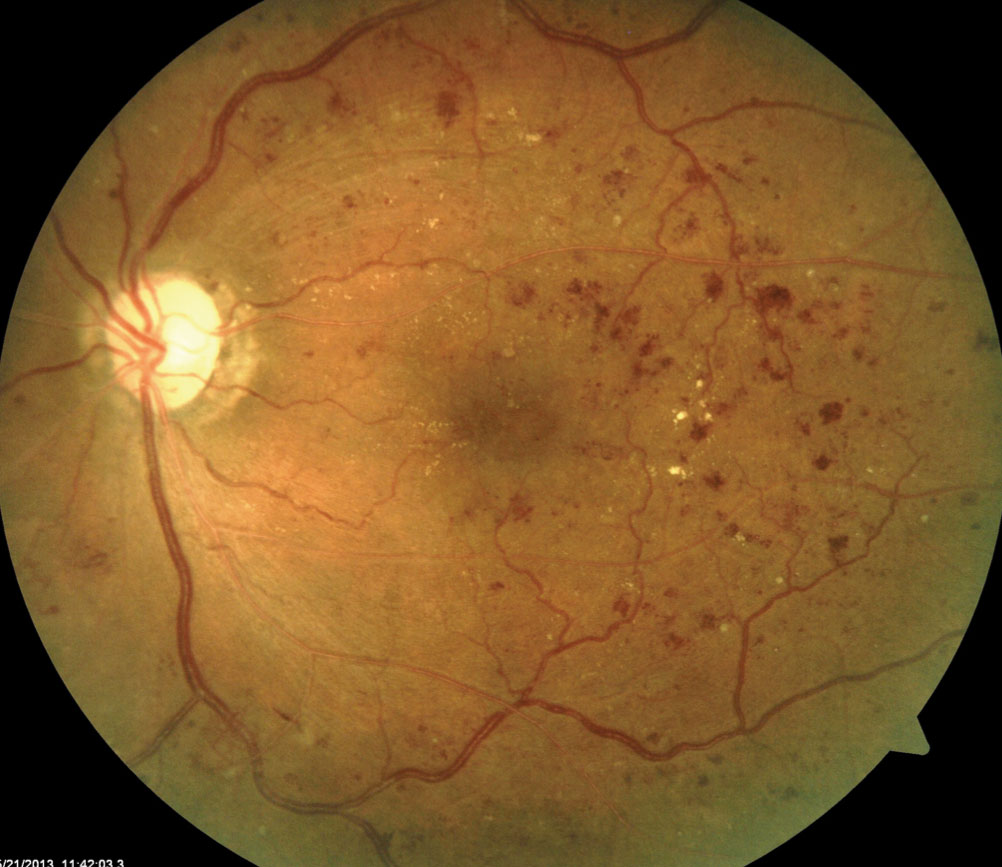 |
| Research shows that children with type 2 diabetes are at greater risk of developing DR than children with type 1 diabetes. Click image to enlarge. |
Despite the increasing prevalence of type 2 diabetes (T2D) among children in recent years, little is known regarding the progression of diabetic retinopathy in these patients. In a recent study, researchers assessed the risk of developing diabetes-associated ocular complications among youth diagnosed with diabetes.
The cohort study included 525 participants aged 22 and younger over a 50-year period. The risk of diabetic retinopathy was 88% greater in those with T2D compared with those with type 1 diabetes (T1D) within the first 15 years of disease. Similarly, risk of developing proliferative diabetic retinopathy (PDR) or requiring pars plana vitrectomy (PPV) was greater in T2D than T1D.
Children diagnosed with T2D had a higher risk of developing diabetic retinopathy, developing PDR and requiring PPV compared with those diagnosed with T1D. The duration between the diagnosis of diabetes and the development of diabetic retinopathy was shorter in the T2D cohort compared with the T1D cohort, and patients with T2D developed vision-threatening retinopathy at a higher rate than those with T1D.
“This suggests that the natural history of retinopathy development among youth diagnosed with T2D may differ from that in youth diagnosed with T1D, where patients with T2D may be more susceptible to developing retinopathy than those with T1D despite controlling for diabetes disease duration,” the authors explained. “The prevalence of retinopathy (30.6% in T1D and 52.7% in T2D by 15 years of diabetes duration) was higher than that reported in most prior studies, likely owing in part to the larger cohort size and longer mean follow-up.”
A previous study showed that hyperglycemia and hypertension led to an association with increased risk for T2D-associated microvascular complications, including retinopathy. In this study, however, “hyperglycemia does not sufficiently explain the increased development of vision-threatening retinopathy in the T2D cohort compared with the T1D cohort because there was no significant difference in HbA1c values between the two groups. There was, however, a higher percentage of patients with T2D who met hypertensive criteria at the initial diagnosis of diabetic retinopathy compared with patients with T1D,” the authors explained.
Additionally, PDR developed after a shorter diabetes duration among children with T2D compared with T1D, which is similar with prior study findings that suggest retinopathy occurs sooner and visual acuity is worse in youth with T2D.
Findings from this study suggest children with T2D have a higher risk of developing retinopathy than those with T1D, potentially requiring more ophthalmoscopic evaluations to help prevent vision-threatening complications.
Bai P, Barkmeier AJ, Hodge DO, Mohney BG. Ocular sequelae in a population-based cohort of youth diagnosed with diabetes during a 50-year period. JAMA Ophthalmol. December 2, 2021. [Epub ahead of print]. |

